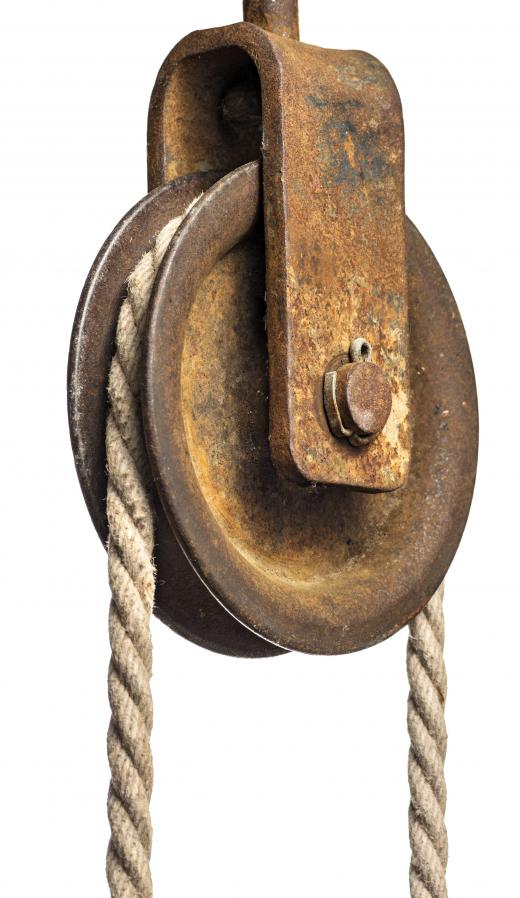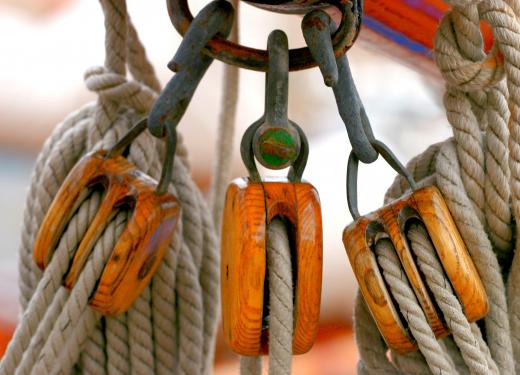A rope sheave is another name for a pulley. These devices are used to both increase and change the direction of force applied to a system whenever a single rope is pulled. While a single rope sheave has little negative impact on a system, multiple angles may have a bad influence. In general, the more angles made in the rope using pulleys, the harder it is to pull. This problem is often made worse by the rope itself, as fat lines are more difficult to pull than slender lines, and high-friction lines are more difficult than smooth ones.
The construction of a rope sheave is quite simple. A center area called a shaft is placed between two larger plates called flanges. These side flanges hold the rope in place, preventing it from sliding out of the system. A line is threaded over the center shaft to complete the device.

Even though the design of a rope sheave is extremely simple, the device is quite complex in function. The first main advantage is the placement of angles in a rope system. The rope pulls in one direction, but will change when it hits the sheave. The rope bends over the center axle and goes out in a different direction.
For instance, if a single person is using a rope and pulley to move an object from the ground to a second story window, the rope goes up in the air, over the sheave and back down to the ground. When the user pulls down on the rope, the pulley lets the force of the pull travel through the sheave and transfer to the object, making it rise into the air. Even though the user pulls down, the object travels up.

The second major purpose of a rope sheave is generating mechanical advantage. This is a technical term that means an object allows more force to leave a system than to enter it. In this case, the pulley allows a person to move or lift objects that he would be unable to move on his own. For instance, it is often possible for one or two people to move a heavy piece of furniture to a second story with a rope sheave, but several people need to lift it to move it in a room.
Mechanical advantage is increased as more pulleys are added to a system. This is why some complex rope systems have several additional pulleys and lines. At a certain point, depending on the materials used in the system, the mechanical advantage begins to sharply decrease. This is generally the result of friction. As more sheaves enter the system, friction increases. Eventually, a user won’t be strong enough to pull the line.
